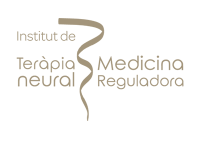How To Get Rid Of Eye Bags
12 Minutes
Do you want to know why your eyes look swollen, and how to get rid of eye bags? Bags under the eyes aren’t harmful to your vision or health, despite the fact that they can be a nuisance. However, there are both short-term and long-term eyebags solutions to minimize the baggy eyes appearance.
Natural aging is the most prevalent cause of puffiness or bags beneath the eyes. As we age, our skin becomes more brittle and prone to wrinkles and folds. As the tissues and muscles around the eye weaken, they can also add to the baggy appearance. As a result of this weakening, the fat around the eye can protrude, giving the impression of a bubble.
Puffiness under the eyes can be treated in a variety of ways depending on the underlying cause. Lower eyelids that are enlarged due to fluid accumulating under the eyes can be reduced using at-home therapies.
There is a limit to what can be accomplished using over-the-counter and home cures. Medical treatment is typically required to successfully remove under-eye bags that are visible and long-lasting.
The term “bags under the eyes” refers to a minor puffiness or edema around the eyes. They become more common as we age and the muscles and tissues supporting our eyelids deteriorate. The lower eyelids can look puffy if the fat that helps maintain the eyes migrates there. Fluid might also collect below the eyes.
Bags beneath the eyes are more often than not a cosmetic issue and not an indication of anything more severe. Cool compresses, an at-home remedy, can make them look better. Eyelid surgery may be a possibility if puffy under-eye bags are a bothersome or recurrent issue.
No matter how unpleasant they may look, bags beneath the eyes usually don’t need to be treated by a doctor. Consult your doctor if you experience blurred vision, itching, or headaches, or if you develop a skin rash as a result of the disease.
Can eye bags go away? “Yes” is the short answer. Your doctor or other health practitioners will also want to rule out other conditions and reasons for swelling, like thyroid diseases, connective tissue disease, infection, or an allergy. A plastic surgeon, ophthalmologist, or an ophthalmic plastic surgeon (oculoplastic surgeon) may be recommended to you.
Bags beneath the eyes might present with the following signs and symptoms:
- Mild swelling
- Loose or saggy skin
- Dark circles around the eyes
Our eyes become puffier as we become older because of fat that escapes the orbit around our eye sockets. Water can be absorbed by this fatty tissue. Water retention, which can occur for a variety of causes such as overeating salt, sleeping flat due to allergies, or experiencing irregular monthly hormone shifts, stands out more as a result.
Dark circles around the eyes can be caused by a variety of factors. As we become older, the skin around our eyes loses its elasticity, making the area more vulnerable to wrinkles. This skin is incredibly thin and sits over underlying purple blood vessels and muscle, which makes it appear darker. The pigmentation in this area might also be inherited.
Puffy eyes can occur for a variety of reasons, including:
Natural aging: As you become older, your skin and muscles lose firmness.
Allergies: Can aggravate under-eye puffiness by causing congestion and irritation.
High-salt diet: Eating lots of salty meals increases water retention and swelling.
Genetics: The under-eye bags can be a physical feature that goes on in your family.
Medical disorders: Some medical illnesses, like thyroid issues, can cause swelling of the eyes.
Smoking. Your eyes may become irritated if you smoke shisha, cigarettes, or cigars. If you are exposed to secondhand and thirdhand smoking, you may get an allergic reaction. Swelling under the eyes can occur as a result.
To prevent puffiness and other symptoms, stop smoking and restrict secondhand smoke. If you are sensitive to smoke residue, make sure to thoroughly clean your home and vehicle. Rinse your hair and clothes after being in the presence of someone who has been smoking.
Infections of the eye. One or both eyes may become swollen as a result of an eye infection. An infection of the eye or the eyelid is possible. Most of the time, the infection and edema begin in one eye and quickly spread to the other.
Make sure you don’t touch or rub your eye. A week is usually enough time for an eye infection to clear up. Treatment with antibiotics may be required.
Swelling under the eyes can be caused by a variety of eye illnesses, including:
- Pink eyes. There are a variety of causes of conjunctivitis, which is also known as conjunctivitis. It’s possible to get pink eye at any age.
- Stye. A tear gland or eyelash follicle infection is what we call a “stye.” Small bumps appear at the lash line, which is usually where it all begins. A stye can cause eye or eyelid swelling, redness, and pus.
- Chalazion. A chalazion resembles a stye in appearance. Your eyelid’s oil gland is clogged, causing the problem. Small bumps on the eyelid are the most common appearance of a chalazion. If it becomes infected, it might cause edema.
- Cellulitis around the eye. In most cases, the sinuses are the source of this inflammation or infection around your eye. Scratches or injuries to the eyelid can also lead to conjunctivitis.
A clean, wet cloth works great for reducing swelling and soreness around the eye. The sooner you consult a doctor if you suspect an infection, the better. To relieve the pain, you may require antibiotics or other types of treatment.
In most cases, bags under the eyes are merely an aesthetic issue that doesn’t require any medical attention. Puffiness can be reduced with lifestyle and home remedies. However, if you’re worried about the look of under-eye puffiness, there are surgical and medical options. If you seek under-eye treatment for bags primarily to enhance your physical appearance, your health insurance company may not pay for it. So what helps with eye bags? And what eye bag treatments are available? Keep reading as we explore the plethora of eye bags treatment.
Medications
If you suspect an allergy is causing the swelling around your eyes, speak with your doctor about the possibility of taking prescription allergy medicine.
Non-Surgical Treatments
The look of puffy eyes can be improved by using several wrinkle treatments. It can improve skin tone and tightness as well as revitalize the under-eye area using chemical peels, laser resurfacing, and filler injections. Laser resurfacing can permanently alter the skin color of those with dark complexion (hypopigmentation or hyperpigmentation).
Hyaluronic acid, which is a jelly-like substance, is used in this procedure to fill in the transition between the under-eye region and cheek. A local anesthetic is used to perform the injection in the doctor’s office. Results can last anywhere from six to twelve months.
As the name suggests, laser resurfacing is an anti-wrinkle treatment that employs a laser to exfoliate the top layer of skin and encourage the production of new collagen. Based on skin type and level of sun exposure, the effects can linger for years.
Wrinkly under-eye skin can also be treated with a chemical peel, which removes the top layer of skin. Applying an in-office chemical solution removes old skin cells, resulting in more hydrated and radiant skin. Results can persist for several years, based on your skin type and amount of sun exposure. Talk to your doctor about the best laser resurfacing method for you.
Reconstructive surgery on the lower eyelids
Eyelid surgery (blepharoplasty) may be an option for treating bags beneath the eyes, based on the underlying cause. For the most part, the surgery includes removing excess fat from the upper and lower eyelids through an incision in the anatomical crease of the upper eyelids or inside of the lower eyelids. Typically, the treatment is performed as an outpatient procedure under the influence of a local anesthetic.
A blepharoplasty can fix the following in addition to removing bags from the under-eye area:
- The upper eyelids appear puffy or swollen.
- Excessive skin on the upper lid that impairs your vision
- Lower eyelid drooping, which may allow the iris to reveal white beneath it.
- The lower eyelids are covered in excess skin.
Your doctor can tell you about the possible adverse effects of eyelid surgery, such as yes and wet eyes. Visual loss, hemorrhage, infection, corneal abrasion, harm to eye muscles, and drooping of an eyelid are among the rare consequences that may occur.
Here are some methods you can practice at home to help fix eye bags:
Apply a cool compress. Cool water should be used to wet a clean washcloth. Apply mild pressure to the skin underneath your eyes with a damp washcloth while sitting up.
Limit your intake of salt and water in the hours leading up to your bedtime. This will help to minimize the fluid retention that can lead to puffy eyes.
Avoid smoking. Bags under the eyes can be made worse by smoking.
Get plenty of rest. A typical night’s sleep for an adult is between seven and nine hours. Adequate rest is one of the best things for under-eye bags.
Maintain a modest elevation of the head while you sleep. Having an extra pillow or raising the head of your bed may be beneficial. Alternately, raise the entire bed’s head by a couple of inches. This prevents moisture from building up around your eyes while you sleep.
Hemorrhoid Creams: In some cases, patients will apply prescription or over-the-counter hemorrhoid creams under their eyes. Phenylephrine, a product ingredient, helps minimize edema by narrowing blood arteries. However, these products should be used with caution because they may irritate this delicate area. Avoid getting this drug in your eyes at all costs.
Black tea bags: Caffeine constricts blood vessels since it is a vasoconstrictor. Many cosmetics businesses offer caffeine-infused eye treatments to minimize puffiness around the eyes. Chilled caffeinated black tea bags can also be applied to the eyelids.
Anti-allergy treatments: Antihistamines can help alleviate the symptoms of allergies. When possible, avoid foods that may cause allergic reactions. Allergy drugs available over the counter can help. If you suffer under-eye reactions from hair colors, cosmetics, soaps, or other allergens, speak with your doctor about preventative techniques.
Consider using retinol cream as part of your daily regimen. You may have tried creams in the past, but focusing on certain ingredients is the key to a successful treatment. Creams containing retinol have been used to treat a wide range of skin conditions, including the following:
- Acne
- Psoriasis
- Aging
- A few types of cancer
This gel, cream, or liquid component is connected to vitamin A.
What role does retinol play in reducing the appearance of dark circles under the eyes? Collagen deficit can be improved by using this substance topically. Low levels of retinol may be found in various over-the-counter (OTC) preparations, but prescriptions for higher lotions are required only by your dermatologist.
Once a day, around half an hour after cleansing your face, retinol is applied to the skin. Pregnant women should avoid using retinol lotions or taking additional vitamin A.
Apply makeup. Makeup can help conceal dark circles beneath your eyes.
Always use a broad spectrum sunscreen. A multitude of dermatological conditions can be improved by using sunscreen to shield your skin from the sun’s harmful rays. These include:
- Premature wrinkling
- Skin cancers
- Hyperpigmentation and discoloration
Sunscreen may also help reduce the appearance of dark circles and under-eye bags as a result.
Wearing sunscreen is recommended by the American Academy of Dermatology. Protecting against both UVA and UVB radiation is essential. Using a water-resistant product with an SPF of 30 or higher is also recommended. If necessary, reapply in accordance with the product’s directions. Use a facial moisturizer with an SPF of 30 or higher on a daily basis.
Consume more products high in collagen. The eyelid tissues and muscles weaken with age. As a result, the skin around your eyes may begin to sag, as well as the fat that’s typically present there.
Hyaluronic acid absorption can be improved by increasing your vitamin C intake. The amount of this essential acid that is naturally present in the body declines with age.
Collagen formation can be aided by foods high in amino acids and vitamin C, which raise your body’s hyaluronic acid levels and, as a result, give you healthier skin.
Vitamin C can be found in the following foods:
- Oranges
- Kale
- Red peppers
- Brussels sprouts
- Strawberries
- Broccoli
Reduce your alcohol consumption. To feel better, you might also want to try cutting back on your alcohol use. Why is this so effective? Increasing your fluid intake is a similar concept. The dehydration caused by drinking alcohol can cause bags and dark circles beneath the eyes.
If you’re in the mood for something different, consider making your own fruit-infused water or buying flavored sparkling water.
Massage of the face. Apply pressure to certain points on your face using the fingertips or a cold facial metal roller. The eyes and sinuses should be massaged or tapped gently in order to assist flush out any excess fluid.
FAQs
How Can Men Get Rid Of Bags Under Eyes?
Men can do a myriad of things to lessen the look of under-eye bags. Making important dietary and behavioral adjustments, such as quitting smoking or drinking less alcohol, are all part of the plan. Additionally, getting enough sleep, eating a well-balanced diet, and staying hydrated can aid in the process. Under-eye bags can be temporarily reduced with these methods, but they may not provide long-term relief.
The market is flooded with products promising to minimize the appearance of puffiness under the eyes. It’s worth noting, though, that many of these lotions and creams are pricey and don’t always fulfill their promises.
How To Remove Eye Bags Permanently?
Eyelid surgery is the most effective way to permanently eliminate under-eye bags. Both men and women can benefit from eye bag removal surgery.
To remove the eye bags, a small incision is made underneath the eyelid. Incision points are stitched together after fatty deposits have been surgically removed and extra skin has been removed. The creases of the eyelids conceal any scars that may have been left behind.
Why Do Crying Cause Puffy Eyes?
Puffy or swollen eyes are often caused by fluid retention. Tears come in three flavors. A person’s eyes are constantly moistened by basal tears. For the front of the eye, they nourish, lubricate, and protect
In order to get rid of irritants like foreign bodies or smoke, the body produces reflex tears. Through the tear ducts, the tears typically exit the eye and exit the nose. Each eye has a little drainage hole in the inner corner.
We shed a lot of tears when we’re sad. The third kind of tears is what is known as “emotional tears”. Tears flow freely from the eyes and nose since the drainage system is overloaded. A puffy under-eye area might be caused by your body’s efforts to reabsorb water.
HOW SENSES CAN HELP WITH Aesthetics
Senses is a leading provider of luxury addiction and mental health treatment for affluent individuals and their families, offering a blend of innovative science and holistic methods with unparalleled individualised care.
A UNIQUE METHOD
successful and proven integrative holistic conceptOur program consists of treating only one client at a time individually designed to help you with all the problematic aspects of your life. All individual treatment sessions will be held at your private residence.
more infoYour program is designed based on your personal needs. The team will exchange daily information and adjust the schedule as we go. Our therapists will work with you treating integrative not just the symptoms and goes beyong your stay to ensure lasting success.
more infoOur biochemical imbalance can be affected by diet and stressful life events, but it often goes back to genetics and epigenetics. We do specific biochemical laboratory testing to determine an individual’s biochemical imbalance. Combining the results of the lab tests with anamnestic information and clinical tests, we prescribe an individualized and compounded vitamin, mineral, nutrient protocol to help recover from various disease states.
more infoOur experts combine the best from psychological treatment, holistic medicine to support you individually and providing complementary therapies all coordinated from one source working complementing each other integrative.
more infoUsing latest cutting-edge technology-based therapies such as Neurofeedback, tDCS, and SSP, we can track the biological patterns of your body, giving us valuable insight into your health and well-being as well support your brain and body performance and recovery with neuromodulation.
more infoOur chef and nutrition specialist will design your personalized diet plan supporting your body & mind recovery as well as helping with weight management. Nutrition workshops and mindful eating sessions will help you to maintain a healthy lifestyle.
more infoAesthetics TREATMENT LASTING APPROACH
0 Before
Send Request
0 Before
Define Treatment Goals
1 week
Assessments
1-4 week
Integrative Holistic Therapies
5-12 week
Aftercare
12+ week
Refresher Visit
Aesthetics Insights
latest news & research on AestheticsHow Long Until You Can Work out After Lip Fillers
Lip fillers are a wonderful method for achieving fuller, plumper lips. As with any treatment, the correct post lip filler care plan is essential to ensuring a positive experience and a speedy recovery
read moreHow To Prevent Bruising After Botox
However, Botox administration does not always result in bruising; in fact, the vast majority of individuals do not develop botox injection bruises after treatment.
read morePost Botox Care
If you would like to learn more about the things you should and shouldn't do after getting botox, continue reading as we're going to discuss what botox i
read moreAccreditations



























































